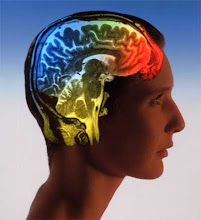In the first sub-topic of memory - 'the nature of memory' - you need to know about all three memory 'stores', so you should know about SM (sensory memory), as well as STM and LTM. Here's a quick summary:
Sensory memory (SM) is the mind's ability to store information from the senses for very brief periods before it is processed.
Each sense is thought to have a separate 'sensory store', but the most well-known are the vision-based store, 'iconic memory', and the hearing-based store, 'echoic memory'.
Iconic memory lasts for 0.5 seconds, and echoic memory lasts for 2 seconds.
We often experience this, when somebody speaks to us & we are not paying attention. If we then focus on what they said, we can still hear a kind of shadow of what they said ringing in our ears, and are able to process it. This can be very useful!
Sperling (1960) studied the capacity of iconic memory by presenting visual items very briefly. The capacity initially appeared small, less than that of STM, but he later found using a 'cued recall' technique that a lot of information is taken in, but it fades too fast for people to be able to report it all. By the time they have recalled the first three or four items, the rest has faded from their 'mind's eye'. By cuing Ps to recall just one line from a three line display, recall rose to 75% from a 12 item display.

Sensory memory (SM) is the mind's ability to store information from the senses for very brief periods before it is processed.
Most of this information fades, but if you pay attention to it, it is processed and passes to STM.
Each sense is thought to have a separate 'sensory store', but the most well-known are the vision-based store, 'iconic memory', and the hearing-based store, 'echoic memory'.
Iconic memory lasts for 0.5 seconds, and echoic memory lasts for 2 seconds.
We often experience this, when somebody speaks to us & we are not paying attention. If we then focus on what they said, we can still hear a kind of shadow of what they said ringing in our ears, and are able to process it. This can be very useful!
Sperling (1960) studied the capacity of iconic memory by presenting visual items very briefly. The capacity initially appeared small, less than that of STM, but he later found using a 'cued recall' technique that a lot of information is taken in, but it fades too fast for people to be able to report it all. By the time they have recalled the first three or four items, the rest has faded from their 'mind's eye'. By cuing Ps to recall just one line from a three line display, recall rose to 75% from a 12 item display.

No comments:
Post a Comment